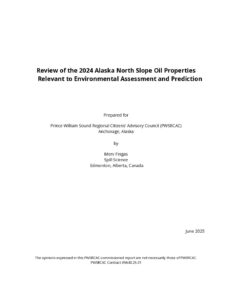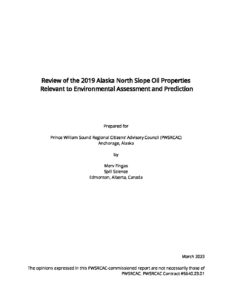This report by Dr. Merv Fingas summarizes his analysis of the physical and chemical properties of a sample of 2024 Alaska North Slope (ANS) crude oil. This analysis is sponsored by the Council every five years or so to track changes in the oil’s properties, and how those changes might impact oil spill response measures including mechanical recovery, in-situ burning, and use of dispersants.
Dr. Fingas noted that the sample’s composition is more similar to the previous sample, analyzed in 2019, than samples taken in 2015 and earlier. ANS crude oil is trending lighter since around 2010, and is now considered a “medium” weight oil. Compared to previous samples, this oil is less prone to emulsify, less dispersible as the oil weathers, and less adhesive to shorelines.

